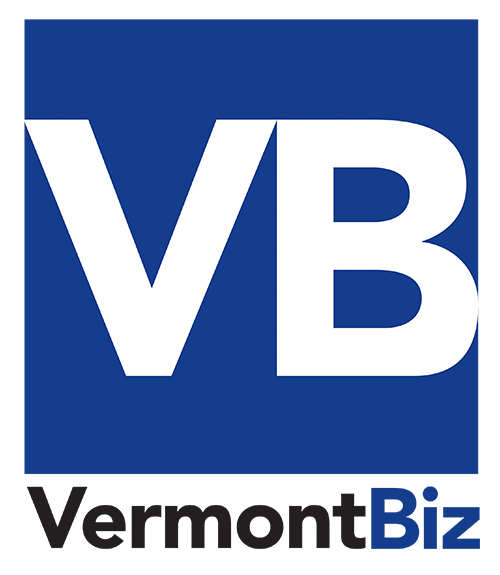Two years after a veto, lawmakers angling again for expungement system reform
Two years after a veto, lawmakers angling again for expungement system reform Vermont Biz


Replacing Expungement with Sealing Records in Vermont
The Sustainable Development Goals (SDGs)
- No Poverty
- Decent Work and Economic Growth
- Reduced Inequalities
- Peace, Justice, and Strong Institutions
The Vermont State House. VermontBiz file photo
by Norah White, Community News Service
Lawmakers in Vermont are making another attempt to pass a bill that would replace the state’s expungement system with a more comprehensive process of sealing records. This comes after Governor Phil Scott vetoed a similar effort nearly two years ago.
Vermont currently has a dual-track system for individuals seeking to clear their criminal histories. Under certain conditions, people can have their criminal records sealed or expunged. The new bill, H.655, aims to switch the process primarily to sealing, with limited exceptions, while expanding the list of crimes that qualify for clearance. The intention behind this compromise is to increase the number of crimes that can be cleared.
Expungement entirely wipes someone’s conviction from the official record — the goal being to see them treated as if they had never been convicted. Sealing a record is meant to have the same effect; however, the record is still maintained and accessible to courts and law enforcement, among others.
The Proposed Objectives of the Bill
- Outline all the qualifying offenses for sealing
- Expand the list of crimes that can be cleared
- Establish a process for sealing records
The bill aims to expand the list of crimes that qualify for clearance in order to improve employment and housing opportunities for formerly incarcerated individuals. Representative Karen Dolan, a sponsor of the bill, emphasizes the importance of this goal.
The proposed process for sealing records involves individuals convicted of a crime petitioning the court for sealing if their offense is no longer illegal or if it qualifies for sealing. The county state’s attorney or the state attorney general will respond to the petition and file an agreement with the court, after which the court will issue a notice of sealing.
The bill also addresses who can access sealed records, including the attorney general, the court that issued the sealing order, the Vermont Crime Information Center, and the Criminal Justice Information Services Division of the FBI.
Supporters and Opponents of the Bill
Supporters of the bill recognize that transitioning from expungement to sealing may be seen as a loss for some convicts. However, they believe that sealing records strikes a balance between providing second chances for individuals who have served their time and ensuring public safety. Victims of crimes also prefer sealing over expungement as it allows law enforcement to identify patterns in criminal histories.
Opponents of the bill, such as Chris D’Elia, president and treasurer of Vermont Banker’s Association, express concerns about the potential impact on employers. D’Elia worries that including certain crimes in the sealing process may hinder employers’ ability to make informed hiring decisions.
Conclusion
The proposed bill aims to create a more merciful criminal justice system in Vermont by providing viable second chances for individuals who have completed their sentences. By expanding the list of crimes that can be cleared and transitioning to sealing records, the bill seeks to address concerns from both supporters and opponents.
The Community News Service is a program in which University of Vermont students work with professional editors to provide content for local news outlets at no cost.
SDGs, Targets, and Indicators
1. Which SDGs are addressed or connected to the issues highlighted in the article?
- SDG 8: Decent Work and Economic Growth
- SDG 10: Reduced Inequalities
- SDG 16: Peace, Justice, and Strong Institutions
2. What specific targets under those SDGs can be identified based on the article’s content?
- SDG 8.7: Take immediate and effective measures to eradicate forced labor, end modern slavery and human trafficking, and secure the prohibition and elimination of the worst forms of child labor.
- SDG 10.3: Ensure equal opportunity and reduce inequalities of outcome, including by eliminating discriminatory laws, policies, and practices and promoting appropriate legislation, policies, and action in this regard.
- SDG 16.3: Promote the rule of law at the national and international levels and ensure equal access to justice for all.
3. Are there any indicators mentioned or implied in the article that can be used to measure progress towards the identified targets?
- Indicator for SDG 8.7: Number of convictions and new cases of forced labor, human trafficking, and child labor.
- Indicator for SDG 10.3: Number of laws and regulations that address discrimination in employment and housing.
- Indicator for SDG 16.3: Proportion of the population who have experienced a dispute in the past two years and have accessed a formal or informal dispute resolution mechanism.
SDGs, Targets, and Indicators
| SDGs | Targets | Indicators |
|---|---|---|
| SDG 8: Decent Work and Economic Growth | Target 8.7: Take immediate and effective measures to eradicate forced labor, end modern slavery and human trafficking, and secure the prohibition and elimination of the worst forms of child labor. | Indicator: Number of convictions and new cases of forced labor, human trafficking, and child labor. |
| SDG 10: Reduced Inequalities | Target 10.3: Ensure equal opportunity and reduce inequalities of outcome, including by eliminating discriminatory laws, policies, and practices and promoting appropriate legislation, policies, and action in this regard. | Indicator: Number of laws and regulations that address discrimination in employment and housing. |
| SDG 16: Peace, Justice, and Strong Institutions | Target 16.3: Promote the rule of law at the national and international levels and ensure equal access to justice for all. | Indicator: Proportion of the population who have experienced a dispute in the past two years and have accessed a formal or informal dispute resolution mechanism. |
Behold! This splendid article springs forth from the wellspring of knowledge, shaped by a wondrous proprietary AI technology that delved into a vast ocean of data, illuminating the path towards the Sustainable Development Goals. Remember that all rights are reserved by SDG Investors LLC, empowering us to champion progress together.
Source: vermontbiz.com

Join us, as fellow seekers of change, on a transformative journey at https://sdgtalks.ai/welcome, where you can become a member and actively contribute to shaping a brighter future.








